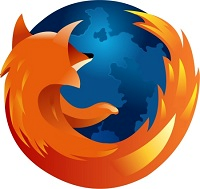After six years of tremendous effort and more than $100 million USD spent, SpaceX made a successful launch of Falcon 1. Falcon 1 is the first booster built by a private company to ever reach the Earth’s orbit. This is the fourth Falcon 1 mission.
The booster lifted off yesterday from the testing site on Omelek Island in the Kwajalein Atoll located in the central Pacific some 2,500 miles southwest of Hawaii.
The previous three missions were not successful, but SpaceX managed to remove all the stumbling blocks out of the way. In less than two months from the previous attempt, on August 2nd 2008, SpaceX had another booster ready for launch.
The payload carried by the Flight 4 mission is a mass simulator that weighs around 165 kg. The payload did not separate but remained attached to the second stage as it orbits the Earth.
Falcon 1 is a two-stage booster. It uses liquid oxygen and rocket grade kerosene as fuel. The booster is 21.3 meters long and 1.7 meters in diameter. It weighs 27, 670 kg when ready to launch. The first stage of the booster is powered by a Merlin 1C engine and the upper stage is powered by a Kestrel engine.
The Merlin 1C engine is a turbo pump fed engine, while the smaller Kestrel engine uses tank pressure to inject the fuel into its combustion chamber. In order to simplify the design, the Merlin engine uses the high-pressure kerosene to cool the combustion chamber and the nozzle. In addition, the engine uses the high-pressure kerosene for the hydraulic actuators, thereby eliminating the need for a separate hydraulic power system.
Falcon 1 is the first in a family of launch vehicles that SpaceX will build and operate. NASA awarded Commercial Orbital Transportation Services (COTS) funding to SpaceX to demonstrate delivery and return of cargo and potentially a human crew to the International Space Station (ISS). In order to achieve these goals, SpaceX is developing a bigger booster, Falcon 9, and a cargo and crew capsule, Dragon.
SpaceX holds a unique position in the launch vehicle market, being able to take over the delivery of supplies and human crews to the ISS, after the Space Shuttle’s retirement in 2010. For more information about SpaceX and its fleet of launch vehicles, check out their website.











 Subscribe to our RSS feed
Subscribe to our RSS feed











There are no comments.
Add A Comment